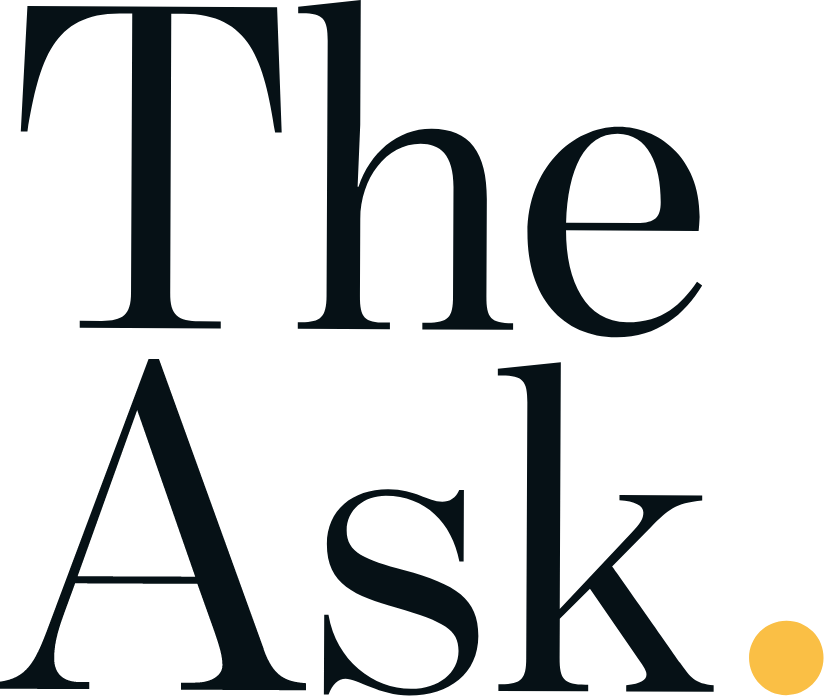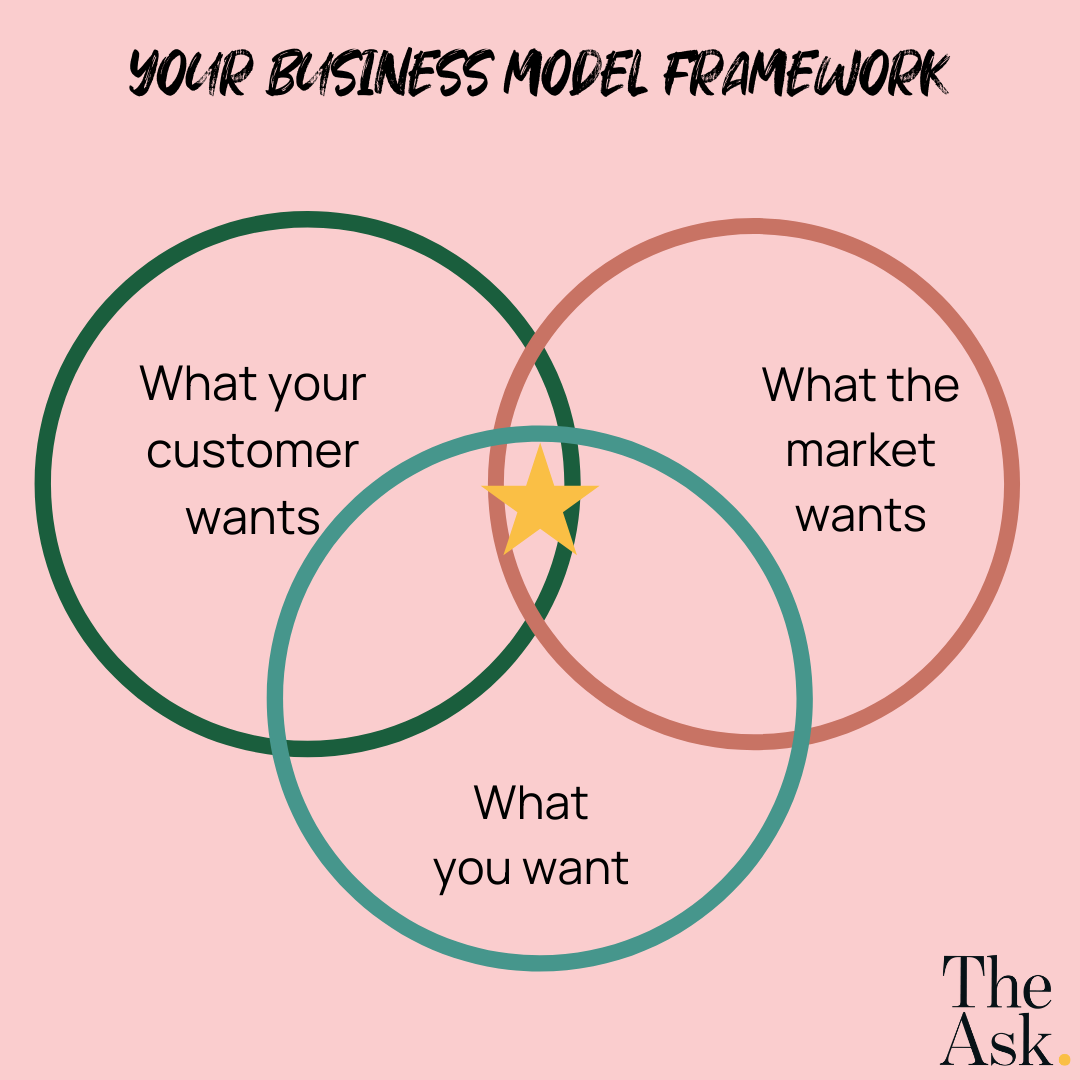How should you design your business model?
A framework for building your business model based on what you, the market and your customer ultimately want.
Recap: We’re on a 16-week email series on company building. This started out by aligning your business with your strengths, what you want personally from it and how to find the time and money to make it happen. Previous posts can be found here.
Now, at the half-way mark, it’s time to figure out how you are going to make money from your business in a way that is sustainable. AKA your business model.
Regardless of whether you raise investment or go bootstrapped, your business will need to bring revenue in at some point and there are hundreds - if not thousands - of ways that can happen.
Rather than go into all of the various business models that exist for different kinds of businesses, I will instead offer a framework for thinking about crafting your business model. (PS I may run a post listing different types of business models that exist in services/software/creator/e-commerce etc so feel free to request that when it’s out by clicking here).
So… WTF Is a business model?
Glad you asked. There are a few definitions and even the smart folks at HBR contend with the right answer. So if you’re confused you’re in good company.
But essentially a business model is a description of how your company runs.
Formed of two parts: 1) How you will create your product/service e.g design and build and 2) How you will distribute it to customers e.g customer research, selling and marketing.
Some back-of-a-napkin examples:
Uber : Builds software that connects cab-driver GPS signals to consumers to track them down, runs a consumer facing app, buys cars and leases them to drivers wholesale, undercuts the existing market price to drive user adoption, aggressive advertising, partnerships with smartphone providers and applications.
Deloitte : Hires smart people, does market research and analysis, designs frameworks on different types of business problems, trains people in client services and communication. Finds corporate clients via networking, referral, and incentivises Partners with equity to sell business. Creates presentations.
Glossier : Creates a blog on beauty, builds an audience, learns their behaviours, designs products, gets manufactured and shipped directly to the audience, builds community and loyalty via social media and digital marketing
And what about strategy?
Strategy is the term that explains how you will do better than your rivals. So whilst certain companies will have almost the exact same business model as their competitors, it is by doubling down on a specific focus area that they can continue to win in a market.
Examples of strategic decisions would be lower prices and promotions (Uber), better customer service (Deloitte), higher quality products (Glossier).
Now that lesson time is over it is time to consider the business model question for yourself.
In my experience working with hundreds of early-stage businesses, there are three areas you must explore before you make your final decision.
Introducing your business model framework
To decide, you’ll factor in the following:
Understanding your customers
Understanding the market
Understanding yourself
Designing a business model is a messy affair. There is no ‘one’ right answer (no-one said running a business is simple!). The way that you get there is by making one decision after another, and learning from mistakes along the way. Whether you plot this back-of-napkin, use a business model canvas, or apply the business model process I have designed, start here and now. Use these prompts to begin sketching out your business model(s).
Part 1 - Understanding your customers
Before you go out and dream up your ‘perfect’ business model you need to consider your customer. Without customers, you don’t have a business, no matter how good you think your idea or product is. No customers = no business.
Customer research is key.
The business model for Uber is fascinating. Whilst I was not in the whiteboard sessions with early Uber employees, they had a clear picture in mind of their customers needs. They were their own target customer.
After attending a tech conference in Paris in 2008, friends and early Uber founders Travis Kalanick and Garrett Camp were unable to get a cab. We’ve all seen those movie scenes; it’s raining, a dark winter night, the city is buzzing and people are fighting over cabs. The perfect setting for a romcom to begin as the pair fight over whose cab it is… I digress.
For Uber founders, like the origin story of many businesses, initial ideas come from problems that your customer needs solving. Very often the founder is their own first customer. This can also be called ‘following your frustration’ or ‘scratching your own itch’. The business model for Uber was designed around this specific need, that the founders intimately understood.
On reflection now I realise that the same is true for my own business. In 2016 I wanted to change careers. (From headhunting into something more creative and multi-disciplinary). Whilst books and articles about career changes were available, I found myself lacking in exercises or practical solutions that could guide me. Especially based on how niche an industry I was coming from.
My response to this problem was to embark on a journey of self-discovery. It was by learning about myself (my personality, strengths, goals, hopes and dreams) that I attempted to map a career path around me. To find something that fit me and not the other way around. This process was surprisingly challenging, yet rewarding. Rewarding because of the insights I gained, and realisation that I enjoyed the process and would love to support others to do the same. Coming from headhunting I had interviewed thousands of people and knew just how many people out there felt lost as to their ideal next steps professionally. The Ask is my response to this unmet need.
Understanding your audience is about listening to their problems, clarifying the exact part they they need help with, and developing something in line with this. Emily Weiss, Founder and CEO of Glossier, amassed an audience for her blog Into the Gloss, from which she detected consumer trends. Weiss observed a shift towards personal style, meaning that buyers wanted to mix and match their look and not base it entirely on what one brand was selling. With the rise of Instagram and street photography this only grew stronger as individuals used beauty and style to showcase more about themselves and a disconnect was growing between brands and consumers. With a strong understanding of her audience, Glossier was born. A direct-to-consumer model that emphasised communication with its consumers and created products from scratch directly around their desires.
What customer needs have you considered in your own business model?
Part 2 - Understanding the market
The market ultimately decides your fate, as Alex Smith last explained last week how most businesses start off with an idealistic idea about what their business will be but ultimately evolve to what the market actually wants them to be in time. Read the Q&A for more pearls of wisdom.
Whilst customers are part of your market, the distinction lies in the fact that customers are not in charge of economics. Meaning that they do not care for the unit economics of what your product costs you to make, they only care about the price they pay. The process you go through to make revenue is determined by the market (costs of goods and labour). It’s about what you can actually make a profit doing, and how much existing products or services cost that are similar.
Customers might love the idea of something, but be unprepared to purchase when they understand the requirements (to download an app, part with their money, attend the classes etc).
So starting with your customers is great, but you also need to understand the mechanics of how this idea will play out.
Marketplaces are a great example of this.
eBay, Airbnb, Fiverr.. They are all based on matching both supply and demand. If you have customers who want to sell old clothes but no one who wants to buy them then your business model falls apart.
The market is arguably one of the trickiest parts to get right and is achieved through practice rather than theory. Only by starting, making something and seeing how the market receives it can you know its viability.
It also changes over time. Both businesses and consumers are driven by the market. If something becomes trendy, we want it for the first time. If it becomes too popular, then the cool kids no longer want it.
Pssst. Are you a startup founder?
Join a free group coaching and intention setting session this Friday morning (9am GMT) with other founders. Sign up here if you’re curious to learn more and join!
Part 3 - Understanding yourself
It wouldn’t be my content if I didn’t lead you back to understanding yourself!
If you are creating a business and you’ve listened to your customers and the market, you can create a business model that works in theory. The extent to which it works in practice, however, will depend on the execution.
As I spoke about in this post having discipline during the process of starting up and running your business is key. A grand vision is only as strong as the execution and you will be better placed having a business model that suits your skills, temperament and interests.
For example, a client of mine felt that a content-first business model would be best for her customers (free to engage with) and the market (creators are making a lot of money from content-led businesses) but when it came to the execution she felt stuck. The process of writing and churning out content regularly was not something that came as easily, as say, operations did. Her background running large projects for corporate clients left her with organisational prowess and a knack for pulling together lots of moving parts.
We explored a different business model. Retreats.
She was able to solve the same problem for her customers but in a different format, and organising and running these long weekends was a much better fit for her skillset. Her first ever retreat sold out and delivered huge impact for her ideal client. Win.
In my own business, there are so many ways to help people with their career decisions and startup building.
The main activities I’ve chosen include 1-1 coaching (I love the depth of connection you build); this newsletter (I love the art of writing and how it creates a different kind of connection) and workshops for startup communities (my existing network, and public speaking is something I’ve done for a long time through drama school and jobs).
Other ways I could make money would be
Information products
Paid Membership
Podcasts
Courses
B2B Coaching
Live events and retreats
Group masterminds
And the list goes on.
The way I will evolve the business over time will be to refer back to the audience, market and my own needs and wants to pick something that works.
So part three is based on knowing your strengths, your personality and your skillset. It brings us right back to the first part of this email series e.g finding your Founder DNA and understanding your personality.
Want to know more? The next post “A Three Part Business Model Framework” shares a unique and practical business model template, an example of an alternative business model canvas, that you can use to design your business. Whilst not a true canvas like the typical ones you find in business school, this template looks at the intersection of three core things you must know in order to start a successful business.
Ellen Donnelly, Founder + Chief Coach, The Ask.
Looking for more hands on support with your business? Book a complimentary consultation for coaching with Ellen here.
Image Credits: Sonya_korshenboym




